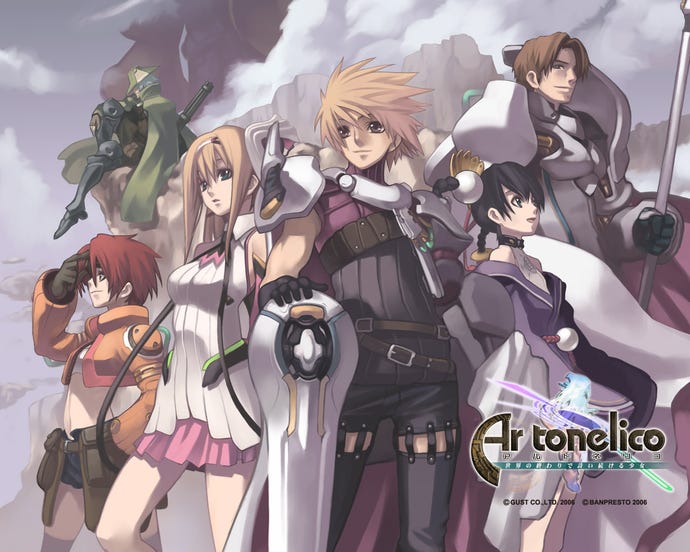I Shall Give You Endless Earth: An Ar Tonelico Retrospective
JRPG developer Gust may be best-known for its Atelier series, but as Pete discovers, its other franchise Ar Tonelico is well worth exploring too.
This article first appeared on USgamer, a partner publication of VG247. Some content, such as this article, has been migrated to VG247 for posterity after USgamer's closure - but it has not been edited or further vetted by the VG247 team.
I've long considered myself a JRPG fan, but for many years it was actually much more accurate to say that I was a Final Fantasy fan, devouring anything and everything Square-Enix put out with the Final Fantasy name on it. In the last couple of years or so, though, I've been exploring many of the less well-known delights of the genre, and making some wonderful, memorable discoveries in the process.
One such discovery is Gust's Ar Tonelico trilogy, though I can't take credit for coming across these games by myself. Rather, I was browbeaten into checking them out by my good friend Alex who, it's fair to say, is extremely enthusiastic about them and had made it something of a mission to get me to play them. They obviously carried a great deal of meaning to him for various reasons, so I was curious and a little bit excited to check them out. Could they really be as interesting, exciting and affecting as he was making out?
Let's explore the series, and you can come to your own conclusions.
Ar Tonelico: Melody of Elemia (PS2, 2006/2007)
The first game in the Ar Tonelico series hit the PlayStation 2 platform in 2006 in Japan and came to Western shores over a year later. This makes it roughly contemporary with Final Fantasy XII, the last entry in Square Enix's franchise to hit the PlayStation 2, and also means that it came out well after the "next generation" of consoles had begun -- the Xbox 360 hit the market in 2005.
Melody of Elemia, to be frank, doesn't look like it came out in 2006/2007. To be brutally honest to the poor game, it looks more like a PS1-era role-playing game if anything, thanks to its low-resolution graphics, prerendered backdrops, isometric-perspective dungeons, sprite-based characters and simplistic 3D battle environments. It plays like one, too -- we're firmly in the realm of invisible random encounters and turn-based battles here, though the first game does introduce a mechanic that becomes a series mainstay: an "encounter meter" which gradually depletes with each random battle, meaning that you can "run out" of enemies in an area after a while.
Melody of Elemia is, however, the poster-boy for the assertion that you shouldn't judge a book by its cover -- and that you shouldn't judge a Japanese role-playing game by its first couple of hours. Because once you get past the dated appearance of the graphics and get into the meat of the game proper, there's a fascinating experience to be had therein.
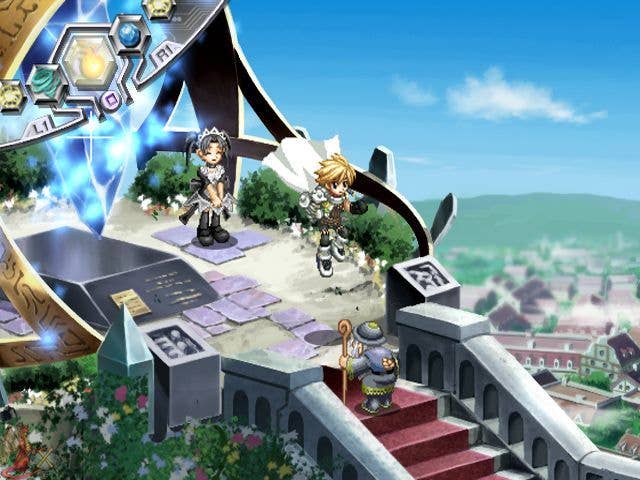
Each Ar Tonelico game tells its own standalone story, though they all share an overarching mythology and occasionally share characters. Essentially, the gist of the game's backstory is this: some 700 years ago, humanity unleashed a terrible disaster on the planet Ar Ciel which flooded it in the toxic "Sea of Death," and have ever since been forced to live on and around artificially-constructed towers made from ancient technology. From time immemorial, humans have lived alongside the Reyvateils, a race of artificially-created human-like women who have the power of Song Magic -- the ability to draw energy from the towers and focus it using the power of their will. Over the years, Reyvateils and humans have bred, leading to a degree of dilution of the former's genetic code, but their power of Song Magic remains. In Melody of Elemia, Reyvateils are treated as second-class citizens, partnered up with humans and treated little better than slaves.
Over the course of the game's story, the protagonist Lyner meets up with several of these Reyvateils along with the usual disparate band of ne'er-do-wells that make up a typical JRPG party. The overall narrative for the complete game centers around Lyner and his friends uncovering a dark plot that will, as these things tend to go, end in Bad Things happening for the world.
So far so cliché, but it's not that simple, for several reasons, and this is why the series is so consistently interesting over the course of its three installments.
For starters, the villain of the piece's motivations aren't made immediately apparent, and indeed it's possible to finish the whole game without discovering an answer to the big "why?" which is hanging over everything that transpires. You see, Melody of Elemia makes use of an unusual, ballsy game structure whereby it's entirely possible to reach a satisfying conclusion two-thirds of the way through the game and never realize that there's a good 15-20 hours more of story that actually explains everything in a much more comprehensive manner.
Not only that, but the entire second "phase" of the game is completely different depending on which of the game's two heroines you choose to tag along with at an important decision point. This makes Melody of Elemia one of the most replayable JRPGs out there -- or, if you decide to only play it once, one in which your experience can be significantly and noticeably different from that which someone else has. Given the genre's reputation for linearity -- particularly in recent years -- this is a particularly noteworthy aspect not only of Melody of Elemia, but of the series as a whole.
Aside from the game's brave, bold narrative structure, there are a number of additional factors which make it worthy of note, too, chief among which is the "Dive" mechanic.
"Diving" describes a process whereby a Reyvateil's human partner enters the virtual, multi-level psychic world inside her mind (known as her "Cosmosphere") and helps her to discover new ways to focus the tower's energy into Song Magic. This is generally done by following along as she comes to terms with various issues and anxieties in her life, with the resulting Song Magic generally reflecting the emotions or concepts she's been dealing with. As the Diver enters into a closer relationship with the Reyvateil, the Reyvateil allows them access into deeper levels of her subconscious, many of which reveal hidden sides of herself that she's too afraid or ashamed to show the world. In order to proceed through these increasingly weird and wonderful worlds, the Diver must show that he accepts the Reyvateil for who she is, warts and all -- but the Reyvateil must also accept herself, and acknowledge the fact that the parts she is most ashamed of are still part of her.
It's one of the most curiously intimate, emotionally engaging character interaction systems I think I've seen in any game, and it's a mechanic which remains a welcome presence throughout the entire series. Unlike the mostly rather clichéd nature of the game's main plot, each level of the Dive sequences includes its own self-contained mini-story, many of which touch on some surprisingly deep and hard-hitting issues.
We're not dealing with your usual JRPG teenage angst here, either; we're looking at deep-seated, real-life mental issues such as low self-esteem, inferiority complexes, feelings of shame regarding sexuality and all manner of other things. The game doesn't beat you over the head with them, though; the Reyvateils are presented as very "human" characters in this regard, and their problems are laid out in a non-judgemental manner. More importantly, despite Lyner's presence while they're working out how to deal with these issues, he's not presented as a "magic bullet" to "fix" them -- more often than not, it's the Reyvateil herself who takes the steps she needs in order to grow, change and heal. In many cases, it's not even a matter of being "fixed" -- it's simply a matter of acceptance. This is who I am, she'll say. And I can deal with it. Can you?
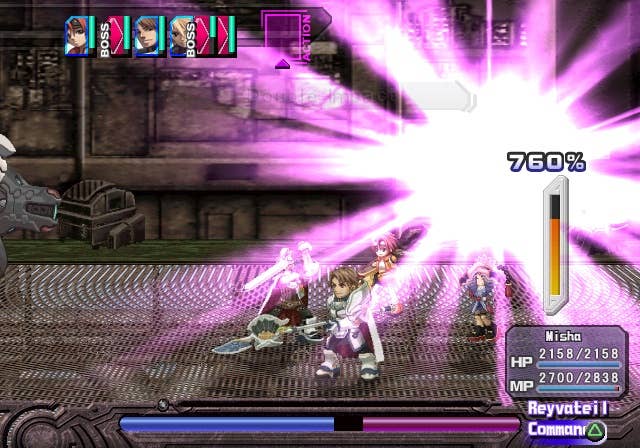
There are plenty of other systems at play that help make the characters in Melody of Elemia a lot more well-realized than many of their counterparts in the JRPG genre, too; aside from Diving, Lyner can improve his relationship with the Reyvateils through collecting Talk Topics that can be discussed when resting at a save point or an inn; the first time you craft a new item, too, results in an entertaining discussion between Lyner and his current partner that culminates in them arguing over what to name the product of the crafting session. The item is then stuck with the name you choose for the rest of the game. It's little touches like this that kept me constantly immersed in the game world and the surrounding fiction, and helped make the game remain consistently compelling despite its dated presentation -- there's not much of the game that is pure mechanics with little in the way of narrative context.
Melody of Elemia isn't the best entry in the series by a long shot, but it sets the template for what is to follow by establishing the game world and the surprisingly detailed, relevant mythology, and is a solid game in its own right. If you can stomach the dated presentation, it's well worth your time.
Ar Tonelico II: Melody of Metafalica (PS2, 2007/2009)
The second entry in the Ar Tonelico series came out in Japan just as Westerners were savoring the joys of the first game, but it was nearly two whole years before the West would get to hear the Melody of Metafalica for the first time. You'll note that despite the game's 2009 Western release date, it's still a PS2 game. This may account at least in part for the fact that it's not an especially well-known game -- most gamers were happily playing on HD consoles by this point, with many PS2s either traded in or left to gather dust by this point. It may also perhaps account for the fact that it was the recipient of one of the most notoriously bad localization jobs of all time; presumably a side-effect of the small audience predicted for the game. So poor was the translation, in fact, that a dedicated group of fans took it upon themselves to do a better job in their own time -- a project which is finally coming to fruition now in 2013.
Translation issues aside, Ar Tonelico II is arguably the strongest entry in the series. And, for that matter, if you keep the voices in Japanese, you stop noticing the questionable translation after a while, too; the English voices, meanwhile, are somewhat cringeworthy, even with the presence of established voice actors like Nolan "Nathan Drake" North in the cast, because the phrasing of the translated words often just doesn't fit with the natural patterns of spoken English.
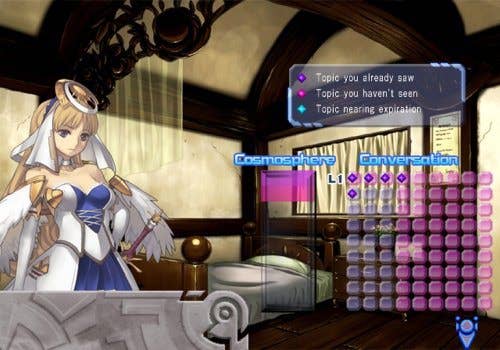
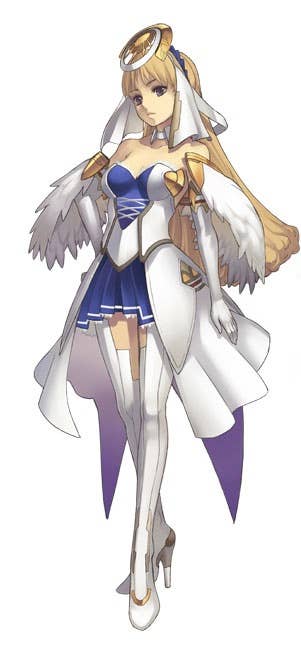
Melody of Metafalica shifts the narrative focus away from the first game's setting to a new landmass floating high above the Sea of Death. In this land, known as Metafalss, there's an enduring legend that if two specific, special Reyvateils sing a Song Magic known as Metafalica, they'll be able to create a brand new unspoiled landmass for the people to live on. Much of the game's plot revolves around discovering the specifics of this legend, and of course, figuring out exactly which of the Reyvateils you come across in your travels are the legendary pair destined to sing Metafalica and save the people of Metafalss.
Melody of Metafalica immediately distinguishes itself from its predecessor by not having quite such a clichéd overall plot. The narrative instead focuses on some interesting, complex political machinations as well as the relationship between the privileged and downtrodden of the world. New protagonist Croix is an interesting choice, too; rather than being the rather conventional blonde-haired, wide-eyed JRPG protagonist that Lyner embodied in the previous game, Croix is a glasses-wearing, somewhat bookish type who is rather softly-spoken for the most part. Like his predecessor, Croix isn't the most important character in the story despite being the one you play as; rather, he's the type who comes along for the ride because he wants to see things through to their conclusion, and to protect his friends and loved ones.
The game makes some curious aesthetic decisions that are initially a little jarring, particularly when coming off the previous game. Different studios worked on the graphics for the field and battle characters, and it shows; while the characters in battle are more realistically proportioned, field screen characters are in possession of some gigantic hands, forearms and feet that take some time to get used to. This isn't to say that it's a bad-looking game, however; on the contrary, it's actually probably one of the best-looking sprite-based games on the PS2, unlike the dated PS1-style appearance of its predecessor -- it just takes a moment to adjust to the new stylistic choices.
The Dive system makes a comeback in Melody of Metafalica with something of a twist: unlike in Melody of Elemia, where it was possible to see all of the Reyvateils' Cosmospheres in a single playthrough, regardless of which girl's ending you chose to pursue, in Melody of Metafalica, you'll "lock out" one of the girls relatively early on, meaning you can only proceed so far in her Cosmosphere before being hit hard with a "whoa... I don't feel comfortable with showing you this; let's just be friends" moment. Meanwhile, you're free to Dive as deep as you like into the other girl to explore her issues, learn more about her and continue to increase the intimacy between her and Croix. This keeps things relatively believable so far as the in-game relationships go -- as in the previous game, the latter levels of the Cosmospheres get pretty close to the bone and focus on the sort of things that people don't generally blurt out to just anyone; it's entirely understandable that someone Croix isn't in an intimate relationship with wouldn't want to share those things with him.
Like Melody of Elemia, Ar Tonelico II features a significant proportion of the game that is totally different according to which of the two main heroines you "side" with early on. Rather than seeing the same events unfold from very different perspectives as in the first game, however, Melody of Metafalica's second "phase" changes noticeably according to this decision, and in the process introduces a new mechanic that allows for the characters to be explored in a different way: the Infelsphere.
Unlike the Cosmosphere, into which Croix dives and deals with one of the girls at a time, the Infelsphere focuses on the relationship between the two girls and how they feel about one another. To say too much about this part would give away a considerable amount of the plot -- and I'm trying to convince you to play these games for yourself, here! -- but suffice to say that it's handled well, much like the Cosmospheres, and it's interesting to see a non-romantic, non-sexual relationship explored in the same manner as the (potentially) romantic relationship between the protagonist and his partner.
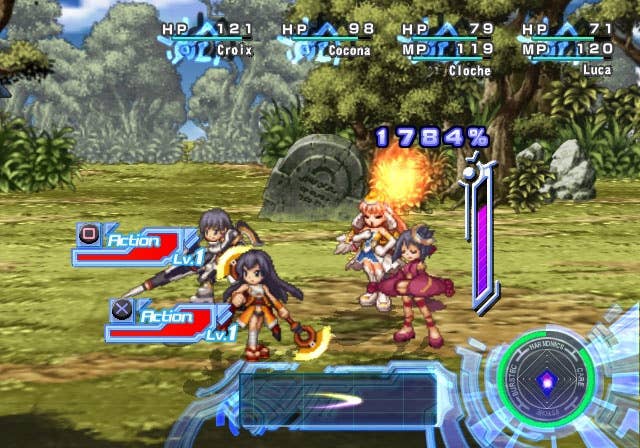
Also noteworthy in Ar Tonelico II is the excellent battle system. In sharp contrast to the first game's relatively conventional turn-based system, Ar Tonelico II makes use of a "phased" system whereby battles alternate between the player's party attacking for a set period of time, then the enemies get to do the same. While you're attacking, various button combinations cause your front-line fighters to unleash special moves which in turn impact the Reyvateils' "emotions" and how effective their Song Magic will be; while you're defending, the front-line fighters must defend the back-row Reyvateils by tapping buttons in time with a rhythm game-style indicator. It's a system that takes some getting used to, particularly if you're used to more conventional JRPG combat mechanics, but once you get the hang of it it's immensely satisfying and a lot of fun -- the only issues with it are a somewhat juddery frame rate at times and a boss battle near the end of the game that causes a game-breaking crash if you don't complete it quickly enough. This latter issue was fixed in the European release of the game, incidentally.
This isn't even getting into the myriad other mechanics that Melody of Metafalica introduces, all of which, much like the crafting system in the previous game, provide yet another means of getting to know the characters. When you're not fighting battles or Diving into the heroines, you'll be helping one of the Reyvateils give therapy sessions, throwing the heroines into a bath infused with magic crystals to upgrade their powers and improve their relationships with one another (which in turn makes their ability to cast Song Magic together more effective), attempting to fulfil various sidequests in order to get characters to join a party member's "fan club" and confer various benefits, and even working through a complete visual novel, unrelated to the main storyline, that one of the characters presents you with "just for fun" towards the end of the game.
If you only play one game in the series, this is the one to go for. However, it's well worth playing this one after the first one, for reasons that are far too spoilerish to go into here. Just trust me on this one, and know that if -- and only if -- you have played the first one, Melody of Metafalica features a "revelation" easily on par with "that moment" in Knights of the Old Republic.
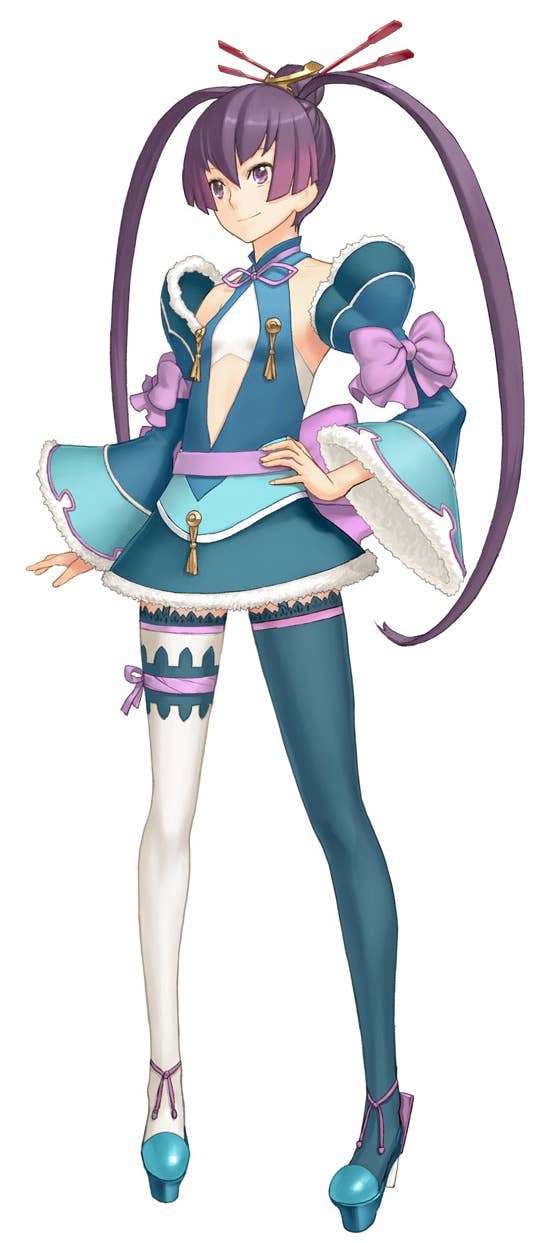
Ar Tonelico Qoga: Knell of Ar Ciel (PS3, 2010/2011)
The third and final Ar Tonelico game -- "Qoga" means "end," if you were wondering -- was also the first to hit the PlayStation 3. It launched in Japan in 2010 and came West in 2011.
Like the previous Ar Tonelico games, Knell of Ar Ciel stands as its own self-contained story, but also carries greater significance for those who have played the previous games, as references are made to characters and events that occurred therein. As with its predecessors, there are a number of different endings that it's possible to attain, with a significant number of them bringing the series to a very final and definite conclusion -- that said, the series mythology was later continued -- albeit in a very different direction -- with the Japan-only Vita spinoff Surge Concerto: Ciel Nosurge.
Let's get one thing out of the way before we discuss the rest of the game: Knell of Ar Ciel is by far the most "fanservicey" of all the Ar Tonelico games. While all of them have a certain degree of innuendo therein -- see the sidebar above -- Knell of Ar Ciel occasionally crosses a few lines the others didn't venture past, and consequently found itself slapped with a Mature ESRB rating rather than the previous titles' Teen ratings.
The most likely culprit for this higher ESRB rating is the game's "Purge" system, whereby -- according to the lore, anyway -- Reyvateils are able to absorb more energy from the tower (and thus unleash stronger Song Magic) by taking their clothes off to reveal more skin. Cue some rather exaggerated sequences of the game's various female characters magically disrobing over the course of a typical battle sequence. These "Purge" sequences can be switched off in the game's menu if you so desire, but it'd be perfectly understandable if their presence put you off playing somewhat. That said, to be fair to the game, all the male characters' clothes fall off when they unleash their special moves, too, leading to some entertainingly ridiculous scenes in later battles as everyone is running around in their underwear fighting giant robots. Doctor Hikari Gojo's fundoshi in particular is quite a sight to behold.
Let's leave that aside for a moment, though, because to focus too much on it is to deny the things that make Knell of Ar Ciel a game worth playing, and a story worth experiencing.
Knell of Ar Ciel once again shifts its attention from the settings of the previous games to an all-new location high above the Sea of Death. This time around, the balance of power between humans and Reyvateils has been reverse from that seen in the first game; here, Reyvateils occupy the tower and oppress the humans below, brainwashing those who will accept their rule and killing those who will not. We join the third game's story in the role of Aoto, a steeplejack who lives on the rocky outcropping of Great Fang, a mountain range that sticks up out of the Sea of Death and which houses the last few human settlements in this part of the world.
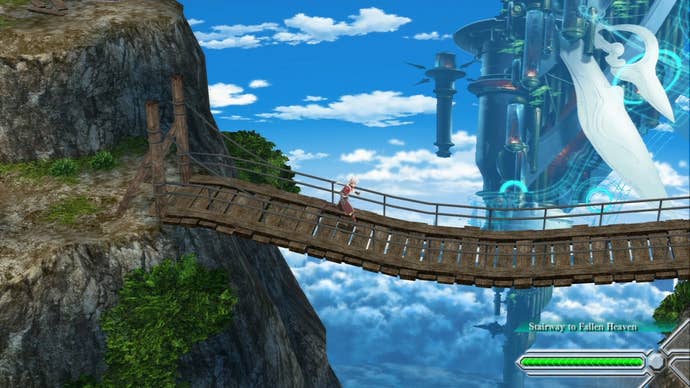
Like the previous games, much of your journey is spent accompanied by two Reyvateil heroines, each of whom has their own distinctive personality and, of course, each of whom has their own Cosmosphere that you can Dive into. Relationships are managed slightly differently from the previous games, however; rather than a single choice "locking" the path that you're on, you're instead presented with three separate opportunities to pick which of the game's two heroines you think Aoto should pursue. If you pick the same Reyvateil three times, you'll get either the bad ending or one of that specific girl's normal or "true" endings depending on subsequent choices, along with a few unique scenes for remaining committed to one girl for the whole game. If you pick one Reyvateil twice and the other once, however, a few additional options become available towards the end of the game, making for a total of eight different possible conclusions to the game, many of which pack a surprisingly powerful emotional punch.
Unlike past entries in the series, however, the game structure doesn't change significantly according to which Reyvateil you pick as your "favorite" -- the overarching plotline stays largely the same, though you'll get more scenes with the individual girl you're closer to as you progress, and each of the endings is distinct from one another. However, like Melody of Elemia, there's an entire 15-20 hours of game that you can skip out on entirely according to one particular choice you make about three-quarters of the way through. Thankfully, the game incorporates a New Game Plus mechanic that allows you to start either from the beginning or at one of two "checkpoints" in the complete story while keeping your attained character levels, making replays for other endings much more manageable than in its predecessors.
As you've probably figured out by now, though, the attraction of the Ar Tonelico series is not necessarily the overarching "big plot," but instead the character development that comes about through the Dive system and related game mechanics. There's nothing wrong with the main storyline per se, but what's much more interesting are the intimate interpersonal narratives that unfold between Aoto and the heroines in the Cosmospheres.
In keeping with the rest of the series, Knell of Ar Ciel doesn't shy away from tackling the sort of issues you don't often see games examining. The heroines bare their souls to Aoto as he delves deeper into their subconscious worlds, and you have the opportunity to discover things about them that make them much more interesting than the stock tropes they might initially appear to be at first glance. One of the heroines, for example, initially appears to be a textbook "tsundere" -- in simple terms, a character who shows her affection through being mean, aggressive and sulky rather than "lovey-dovey" -- but through exploring her Cosmosphere, you discover that her outward personality is actually overcompensating for a considerable degree of self-loathing that occasionally manifests itself as outright masochistic tendencies. Her nature isn't presented as a problem that Aoto can "fix" with his Magic Man Powers, though; it's simply part of her being that both she and Aoto have to come to terms with if they want to accept one another and be together.
Let's revisit that "Purge" system, now. Yes, its implementation is somewhat gratuitous, and the accompanying video sequences are very much designed with "male gaze" in mind, but there's an argument here that there's a degree of symbolism in play, too. You're not able to Purge the heroines' clothes in battle until you've reached a particular level in their Cosmosphere; as you become more intimately involved with them and reach deeper into their psyche, they bare more of their soul to you and thus become willing to bare more of their skin to you. This symbolism is further reflected by the introductory screens for each level of the Cosmosphere; as you get deeper into the girl's mind, the image of her wears fewer layers of clothing to reflect the fact she is hiding less from you.
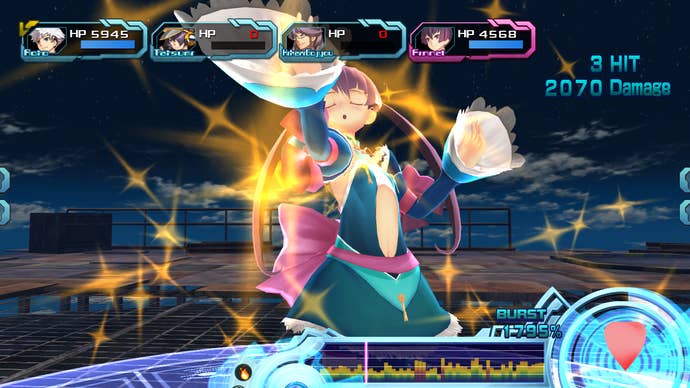
No, it's perhaps not handled as well as it could be and it's easy to see it as perverted and/or fanservicey, yes, but having spent a lot of time with this game, I can't help feeling that the intention to make it symbolic was at least there, even if the execution came across in a somewhat ham-fisted manner. Whether this was due to budgetary constraints, technological limitations or simply the writers not being able to handle it properly is anyone's guess at this stage -- though given how well things such as the issues tackled in the Cosmospheres are handled, I'm skeptical that it's the fault of the writers.
Perhaps it really is nothing more than fanservice designed to shift a few more copies of the game. Regardless, it is a small part of the overall experience, which is otherwise good, if, like Melody of Elemia, somewhat dated compared to its contemporaries. The game as a whole serves as a fitting dénouement to the complete series, and wraps things up very nicely in narrative terms.
Why Should You Play These Games?
In short, despite occasionally rocky translations -- particularly in the second game -- the Ar Tonelico series provides some of the most consistently interesting, well-crafted characters I've ever come across in the whole JRPG genre. These are characters who are all far more than simple walking tropes; the Reyvateils in particular are deep, complex individuals whom you can explore in great detail through taking advantage of the games' various mechanics. If you have ever known anyone with the issues that the Reyvateils work their way through in the Dive sequences -- or even dealt with them yourself -- these interactive character explorations can be relatable to a highly moving, painful degree at times.
The games are also worth exploring for the sheer amount of detail that has gone into the setting. And this isn't just stuff that has been incorporated to pad out a largely irrelevant in-game Codex, either; the series' lore is relevant in each game, and over the course of the entire trilogy you start to get a very strong feel for how the three towers' societies work, and precisely what happened 700 years ago. Each game has a deliberately small number of locations to explore that you tend to revisit several times; over the course of your various visits, each location starts to possess a great deal of meaning and context, giving you a very strong sense of "place" in the world. Combined with the strongly-defined characters, it feels very much like a setting that has been designed to feel "alive" and "real" rather than a linear progression of locations to work through.
They may not be the best JRPGs you'll ever play in terms of presentational polish or indeed with regard to their gameplay, but if ever there was a series worth exploring on the strength of its narrative, setting, characters and degree of emotional engagement alone, it's Ar Tonelico.
And aside from all this, if you're read the sidebar on Hymnos you'll know that if nothing else, this series has some of the most incredible music you'll ever hear in any game, bar none. If you haven't yet read the aforementioned sidebar, allow me to leave you with this spectacular track from the third game to educate you. Enjoy.
